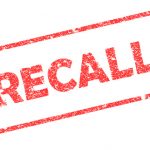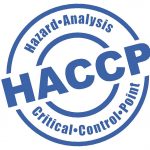You’ve heard the horror stories of product recalls: The Peanut Corporation of America in 2009, Blue Bell ice cream in 2015, and Darwin’s Raw Pet Foods this year. Beyond the nightmare scenario, the truth is that food recalls are common—even for companies that take food safety seriously, train effectively and keep excellent records. Yet all of these things, when done properly and efficiently, go a long way to reduce the impact and severity of a recall.
Unfortunately, many food manufacturers, although required to have a written recall plan, aren’t ready for the challenge. Without the proper systems in place, businesses needlessly risk their customers, reputation, revenue and future.
Risks Of Inadequate Recall Strategies
Resolving a recall can take years and potentially millions of dollars in fines, product shipping and disposal cost, production line downtime, lawsuits, and lost market share as consumers lose trust in the company. But there are two strategic errors that can amplify these consequences—and they both have to deal with traceability.
The first problem we frequently see is lot codes not being specific enough. Rather than breaking up production into discrete lot codes so the scope of recalls can be as limited as possible, some facilities just run the same lot code for many production runs. The record we have seen so far is three years! When a recall occurs,this results in a recall of massive scope that can easily bankrupt a company.
The second problem that is even more common is a lack of dynamic documentation. Assembling transactions using disconnected records from different departments can be time-consuming and error-prone. When you’re under pressure from regulators or auditors to connect the dots between an ingredient and customers through complex, multi-stage production processes using such a record system, it can cause stress and potential audit failures.
These two missing pieces make recalls larger, more time-consuming, and more expensive than necessary due to a lack of precise traceability. Let’s take a look at the two ways you can fill these gaps in your system and mitigate the consequences of recalls.
Get Specific with Ingredients, Suppliers and Lot Codes
Streamlining your product lines and packaging options lists is a straightforward way to reduce potential headaches in the event of a recall. The more products and packaging options with which you work, the more complex it will be to pinpoint and resolve food safety failures. Anyway, this type of housekeeping is beneficial as far too many companies have large lines where only a small subset of their products sell well at decent margins. Larger, more mature organizations tend to thin down their lines to optimize for profitability, and smaller companies can often benefit from doing the same.
The next strategy you can employ to mitigate the consequences of a recall is by being ultra-precise when it comes to your records and lot codes. The more narrowly you refine your lot coding system, the fewer items you’ll have to recall. Let’s look at a specific example of how this could have saved two companies millions of dollars.
In 2010, Hillandale Farms and Wright County Egg recalled about 550,000,000 eggs, one of the largest recalls in the history of the United States. Although the company was able to resolve the specific dates and facilities where the contaminated product originated, they had 53 million hens laying, so this level of resolution may not have been adequate enough. Had they implement traceability lot codes down to the hen house level, they may have been able to contain the recall.
Automate Your Traceability To Be Audit Ready, All The Time
The challenge of maintaining an overly broad product line or providing customized packages is that you create hundreds or thousands of variants in your products. When records are maintained manually, it becomes extremely difficult to manage recalls effectively. An Excel spreadsheet may keep a record of everything, but it’s certainly not dynamic or time-efficient when undertaking mass balance calculations.
The key here is to adopt software that you can incorporate into every department. Shipping, receiving, accounting, production—when all the records are kept in a central database, checking and updating those records becomes much easier. But the best systems don’t just centralize your collected data; they automate your data collection.
Dynamic documents automatically update each other. When a supplier changes, an ingredient lot gets swapped out, or products are shipped out, all the connected records for every department are automatically updated. No user mistakes, no failure to update the notes—just seamless, streamlined, auto-updating records.
There’s no better way to track complex production processes, control hazards, and collect all the necessary information necessary to breeze through audits than by using an automated system. With all your documentation interconnected, you don’t have to piece together the puzzle or play connect the dots—it’s all done for you, and that means you won’t waste millions on recalling products unnecessarily because you couldn’t pinpoint the exact path every ingredient took on the way to the customer.
Recalls are detrimental in every way, but they happen, so don’t get caught off guard. A little bit of proactive technology will go a long way in keeping your business afloat if you ever do face the nightmare of a recall.







